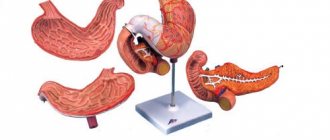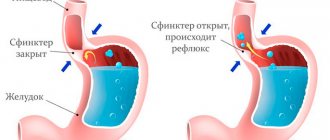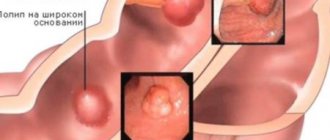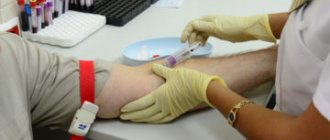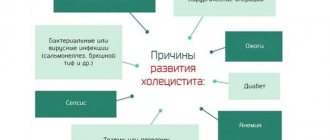Colonization of Helicobacter pylori on the surface and folds of the gastric mucosa significantly complicates antibacterial therapy. A successful treatment regimen is based on a combination of drugs that prevent the emergence of resistance and overtake the bacteria in different parts of the stomach. Therapy must ensure that even a small population of microorganisms does not remain viable.
Helicobacter pylori eradication therapy includes a complex of several drugs. A common mistake that often leads to unpredictable results is replacing even one well-studied drug from a standard regimen with another drug from the same group.
Proton pump inhibitors (PPIs)
PPI therapy has proven effective in various clinical studies. Although PPIs have a direct antibacterial effect on H. pylori in vitro, they do not play an important role in eradicating the infection.
The mechanism by which PPIs synergize when combined with antimicrobials to enhance the clinical efficacy of eradication therapy has not been fully established. It is assumed that antisecretory drugs of the PPI group may help increase the concentration of antimicrobial agents, in particular metronidazole and clarithromycin, in the gastric lumen. PPIs reduce the volume of gastric juice, as a result of which the leaching of antibiotics from the surface of the mucosa decreases, and the concentration, accordingly, increases. In addition, reducing the volume of hydrochloric acid maintains the stability of antimicrobials.
Definition
An acceptable Helicobacter pylori (Hp) eradication regimen is considered to be a treatment regimen that provides at least 80% of effectively confirmed by repeated examination cure of Helicobacter pylori infection and healing of ulcers or gastritis, lasting no more than 14 days and having acceptably low toxicity (side effects should develop no more than than in 10-15% of patients and in most cases not be so serious as to require early cessation of treatment).
New schemes and protocols for Helicobacter eradication are constantly being developed. This serves several purposes:
- increasing the convenience of treatment for patients and the degree of their compliance with the treatment regimen: eliminating the need for a strict “anti-ulcer” diet thanks to the use of powerful proton pump inhibitors;
- reducing the duration of treatment (from 14 to 10, then 7 days);
- reducing the number of drugs taken simultaneously through the use of combination drugs;
- reducing the number of doses per day due to the use of prolonged forms of drugs or drugs with a long half-life (T1/2);
Bismuth preparations
Bismuth was one of the first drugs to eradicate H. pylori. There is evidence that bismuth has a direct bactericidal effect, although its minimum inhibitory concentration (MIC - the smallest amount of drug that inhibits the growth of a pathogen) against H. pylori is too high. Like other heavy metals such as zinc and nickel, bismuth compounds reduce the activity of the enzyme urease, which is involved in the life cycle of H. pylori. In addition, bismuth preparations have local antimicrobial activity, acting directly on the bacterial cell wall and disrupting its integrity.
Second line
The second line includes four components. The patient continues to take proton pump inhibitors, and both antibiotics are replaced by others. To these is added the bismuth preparation used by Barry Marshall. The line is in second place due to slightly greater toxicity. This is a backup remedy for fighting infection. Whether it is needed, decide for yourself. It is believed that therapy is mandatory if there is a history of relatives predisposed to gastritis, ulcers, cancer, and so on.
Metronidazole
H. pylori is generally very sensitive to metronidazole, the effectiveness of which is independent of pH. After oral or infusion use, high concentrations of the drug are achieved in the gastric juice, which makes it possible to achieve the maximum therapeutic effect. Metronidazole is a prodrug that undergoes activation by bacterial nitroreductase during metabolism. Metronidazole causes H. pylori to lose its helical DNA structure, causing DNA damage and killing the bacterium.
NB!
The result of treatment is considered positive if the results of the test for H. pylori, carried out no earlier than 4 weeks after the course of treatment, are negative. Performing the test before 4 weeks after eradication therapy significantly increases the risk of false negative results. It is preferable to stop taking PPIs two weeks before diagnosis. Helicobacter pylori eradication therapy: scheme
Eradication of Helicobacter pylori
Stomach ulcers, gastritis, duodenitis and other diseases of the digestive system are often caused by Helicobacter pylori. This bacterium lives and develops in the mucous membrane of the duodenum and stomach, although the acidity level of the latter is so high that it can dissolve plastic. Infection occurs through the oral route (through food, kissing, or sharing utensils). Helicobacter pylori does not make itself felt in 90% of cases and is activated when there is a disruption in the immune system, poor diet, or under the influence of bad habits.
To survive in an acidic environment, Helicobacter produces the enzyme urease, which breaks down urea. During the reaction, ammonia is formed, which neutralizes hydrochloric acid and causes irritation and inflammation of the mucous membrane. This leads to an increase in the secretion of pepsins and hydrochloric acid, which negatively affects the gastrointestinal tract. Destructive processes begin in the mucosa: it becomes loose, then collapses, causing the appearance of inflamed areas with the formation of ulcers.
Gastritis caused by Helicobacter pylori does not respond to traditional treatment. The bacterium has the ability to penetrate deep into tissues, and therefore becomes inaccessible to many antibiotics, which lose their abilities in an acidic environment. Due to the destructive actions of microbes, irreversible processes begin in the mucous membrane that can provoke a precancerous condition and cause oncology. To prevent such developments, eradication is used.
Symptoms of Helicobacter pylori infection
It is not easy to detect Helicobacter, since the symptoms of its presence are no different from the signs of ulcers or gastritis, which were caused by other causes. The disease manifests itself as follows:
- Abdominal pain of cutting or dull nature. It may occur at regular intervals or on an empty stomach, disappearing after eating.
- Belching – signals excessive acidity of gastric juice.
- Regular nausea and vomiting.
- Excessive gas formation in the intestines, bloating (flatulence).
- Abnormal stool: diarrhea or constipation for more than 2-3 days, presence of blood and mucus in the stool.
Diagnosis of Helicobacter pylori infection
If you experience abdominal pain, heartburn, diarrhea or constipation, you should consult a doctor and undergo an examination to determine the cause of the ailment. Including taking tests to determine the presence of Helicobacter pylori infection in the body. Among them:
- Serological examination is an enzyme-linked immunosorbent assay (ELISA), which involves testing blood for antibodies that are produced in the body to fight the pathogen.
- Stool analysis using the polymerase chain reaction method to determine traces of the presence of microbial activity.
- A breath test to determine the level of ammonia in the exhalation.
- Cytological examination - can determine the presence of bacteria by its DNA.
- A biopsy, during which tissue from the mucous membranes of the duodenum and stomach is taken for examination using endoscopy. This examination determines the condition of the tissues and the presence of cancer cells.
- Urease test (CLO test) - a mucous sample is placed in a nutrient medium with urea and an indicator. Urease, which is secreted by bacteria, reacts with urea, causing it to change its color from yellow to red.
Clarithromycin
Clarithromycin, a 14-member macrolide, is a derivative of erythromycin with a similar spectrum of activity and indications for use. However, unlike erythromycin, it is more acid resistant and has a longer half-life. The results of studies showing that the triple eradication therapy regimen for Helicobacter pylori using clarithromycin gives a positive result in 90% of cases, led to the widespread use of the antibiotic.
In this regard, an increase in the prevalence of clarithromycin-resistant strains of H. pylori has been recorded in recent years. There is no evidence that increasing the dose of clarithromycin will overcome the problem of antibiotic resistance to the drug.
Bibliography
- Management of Helicobacter pylori infection—the Maastricht V/Florence consensus report P Malfertheiner, F Megraud, CA O'morain – Gut, 2017
- Therapeutic effectiveness of essential oils against Helicobacter pylori infections N Mimica-Dukić, N Simin – Facta Universitatis, 2018
Gastroenterologist, Therapist
The doctor conducts a general diagnosis of internal organs. Draws conclusions about disorders in the gastrointestinal tract based on the results of the examination and prescribes appropriate treatment. Among the diagnoses that the specialist deals with are: stomach and duodenal ulcers, gastritis, dysbacteriosis, etc.
Other authors
Indications for eradication therapy
According to the Maastricht 2-2000 Consensus Report, H. pylori eradication is strongly recommended:
- all patients with peptic ulcer disease;
- patients with poorly differentiated MALT lymphoma;
- persons with atrophic gastritis;
- after resection for gastric cancer;
- first-degree relatives of patients with stomach cancer.
The need for eradication therapy in patients with functional dyspepsia, GERD, as well as in persons taking non-steroidal anti-inflammatory drugs for a long time remains a subject of debate. There is no evidence that eradication of H. pylori in such patients affects the course of the disease. However, it is well known that individuals with H. pylori who have nonulcer dyspepsia and corpus-predominant gastritis are at increased risk of developing gastric adenocarcinoma. Thus, H. pylori eradication should also be recommended for patients with nonulcer dyspepsia, especially if histology reveals corpus-predominant gastritis.
The argument against anti-Helicobacter therapy in patients taking NSAIDs is that the body protects the gastric mucosa from the damaging effects of drugs by increasing cyclooxygenase activity and prostaglandin synthesis, while PPIs reduce natural defenses. However, eradication of H. pylori before prescribing NSAIDs significantly reduces the risk of peptic ulcer disease during subsequent treatment (a study by American scientists led by Francis K. Chan, published in The Lancet in 1997).
Diet during treatment
The eradication diet depends on the general condition of the patient and the severity of the symptoms of the underlying disease.
Stomach diseases with high acidity
Spicy foods, spices, and seasonings are excluded. Food is subjected to gentle heat treatment: steaming, boiling, and stewing are preferred. Frying, smoking, pickling are excluded. At the same time, foods that increase the production of gastric juice are also prohibited:
- sour, fresh vegetables and fruits, rich in coarse fiber;
- most unpolished cereals;
- marinades;
- strong broths;
- rich soups;
- fatty foods.
Since coffee has an irritating effect on the walls of the stomach, during treatment you should avoid all caffeine-containing drinks and very strong tea. Alcohol should also be avoided.
- mashed potatoes;
- lean boiled dietary meat;
- fish;
- dairy products;
- eggs;
- rice and oatmeal porridge;
- yoghurts;
- slimy soups.
With low acidity
The diet includes juice products:
- pickles,
- marinades,
- bitter herbs,
- spices.
However, you should also exclude foods that can cause exacerbation of inflammation and deterioration of the protective properties of the gastric mucosa. Therefore, at the treatment stage, it is advisable to exclude products containing various industrial impurities and additives:
Eradication therapy
Despite the use of combination treatment regimens, 10–20% of patients infected with H. pylori fail to achieve elimination of the pathogen. The best strategy is to select the most effective treatment regimen, but the possibility of using two or even more sequential regimens should not be ruled out if the treatment of choice is insufficiently effective.
If the first attempt at eradication of H. pylori fails, it is recommended to immediately proceed to second-line therapy. Antibiotic sensitivity testing and switching to salvage therapy regimens are indicated only for those patients in whom second-line therapy will also not lead to eradication of the pathogen.
One of the most effective “rescue regimens” is a combination of PPI, rifabutin and amoxicillin (or levofloxacin 500 mg) for 7 days. An Italian study led by Fabrizio Perri and published in Alimentary Pharmacology & Therapeutics in 2000 confirmed that the rifabutin regimen was effective against strains of H. pylori resistant to clarithromycin or metronidazole. However, the high price of rifabutin limits its widespread use.
NB! To avoid the development of resistance to both metronidazole and clarithromycin, these drugs are never combined in the same regimen. The effectiveness of such a combination is very high, but patients who do not respond to therapy usually develop resistance to both drugs at once (a study by German scientists led by Ulrich Peitz, published in Alimentary Pharmacology & Therapeutics in 2002). And further selection of therapy causes serious difficulties.
Research data confirm that a 10-day salvage therapy regimen, including rabeprazole, amoxicillin and levofloxacin, is much more effective than standard second-line eradication therapy (a study by Italian scientists led by Enrico C Nista, published in Alimentary Pharmacology & Therapeutics in 2003 year).
Contraindications and side effects
5–20% of patients experience side effects when taking drugs to eradicate bacteria.
They are usually not severe and do not require discontinuation of treatment. Name of the drug Side effects Common Side effects Uncommon Contraindications Proton pump inhibitors cough; pharyngitis; abdominal pain; diarrhea.
paresthesia (impaired sensitivity); alopecia (baldness).
hypersensitivity to the drug; impaired renal function; for some drugs - pregnancy and childhood.
Clarithromycin may cause stomach pain; altered sense of taste (metallic taste).
arrhythmia (heart rhythm disturbances); allergic reactions.
hypersensitivity to macrolides Amoxicillin rash; diarrhea.
crystalluria (salt crystals in urine); allergic reactions.
hypersensitivity to penicillins and cephalosporins; infectious mononucleosis (infectious viral disease); with caution - in pregnant women.
Metronidazole thrombophlebitis; nausea; headache; vaginal discharge.
toxic damage to the optic nerve;
pancreatitis; hepatitis; thrombocytopenia (decreased platelets in the blood).
hypersensitivity to the drug; first trimester of pregnancy; diseases of the blood system; damage to the central nervous system.
Salts bismuth dark staining of the tongue, teeth and stool; diarrhea; nausea; vomiting.
dizziness; headache; toxic damage to the nervous system.
pregnancy; breastfeeding; kidney disease.
Tetracycline increased sensitivity to light, azotemia (increased levels of nitrogenous substances in the blood), increased sensitivity to the drug; kidney and liver diseases; pregnancy; breastfeeding; childhood.
Tinidazole altered sense of taste (metallic taste); candidal vaginitis (fungal infection of the vagina).
confusion; agitation; convulsions.
hypersensitivity to the drug; pregnancy; breastfeeding; diseases of the blood system; diseases of the nervous system; childhood.
Levofloxacindiarrhea; headache; nausea.
arrhythmia (heart rhythm disturbances); hypoglycemia (low blood glucose levels); hypersensitivity reactions; tendonitis (tendon inflammation).
hypersensitivity to the drug; epilepsy; history of tendinitis caused by fluoroquinolones; childhood; pregnancy; breastfeeding.
The ideal eradication therapy can be considered therapy that meets the following requirements:
- Consistently high level of HP eradication
- Simple reception mode (convenience)
- Low incidence of side effects
- Economical
- Minimal impact of resistant strains on eradication rates
- Effective effect on the ulcerative process.
Active life activity of Helicobacter pylori is the main factor provoking the development of peptic ulcer disease. The bacterium gradually disrupts the functional state of the digestive tract over a long period of time, having a destructive effect on its mucous membranes. With timely treatment, peptic ulcer disease can be avoided.
An additional indication for eradication is the identification of bacterial infection in a patient in combination with cases of cancer of the digestive system in his relatives. In the presence of such factors, eradication therapy is carried out for prophylactic purposes.
Timely treatment significantly reduces the risk of complications and progression of inflammatory processes.
Requirements for eradication recommended by WHO
Doctors around the world dealing with infections caused by Helicobacter pylori have reached international agreements. They include the creation of standards and schemes that increase the effectiveness of diagnostic and therapeutic techniques, called Maastricht. The information is regularly updated and currently contains the following requirements for eradication:
- positive treatment results in 80% of patients;
- duration of therapy is no more than 14 days;
- use of drugs with low toxicity.
The Maastricht recommendations contain the following requirements for medical procedures:
- interchangeability of medicines;
- reducing the frequency of taking medications;
- slight resistance (resistance) of Helicobacter pylori strains to drugs;
- ease of use of treatment regimens;
- the occurrence of side effects is no more than 15% of patients; their effect should not interfere with the implementation of treatment procedures.
Doctors came to the conclusion that the proposed methods reduce the number of complications that arise. Two lines of eradication are recommended, which require compliance with the following sequence:
- The treatment process begins with first-line regimens.
- If there are no positive results, they move on to the second.
- Treatment monitoring is carried out one month after completing the course of all measures.
Eradication therapy for Helicobacter pylori infection
2005 is the year of two significant events associated with the microorganism Helicobacter pylori. The first event has a huge public resonance: the Nobel Prize in Physiology or Medicine in 2005 was awarded to two Australian researchers - Barry J. Marshall and J. Robin Warren for the discovery of “the bacterium Helicobacter pylori and its role in gastritis and peptic ulcers.” The first culture of a then unknown microbe, isolated from biopsy specimens of the human antrum, was obtained in 1982. Since then, a significant amount of knowledge has been accumulated about the significance of H. pylori in the pathogenesis of human diseases and the possibilities of therapy for these diseases. The second event was expected by doctors and specialists. This is another revision of authoritative European recommendations for the diagnosis and treatment of H. pylori infection. Based on the name of the place where the first conferences to develop consensus in this area were held - the city of Maastricht - the recommendations are called Maastricht, and based on the number of such conferences - the third Maastricht recommendations (previous conferences were held in 1996 and 2000). Indications for eradication therapy of H. pylori infection
The indications
for mandatory treatment aimed at destroying H. pylori are:
• Peptic ulcer of the stomach and duodenum, both in the acute and remission stages, as well as after treatment of complications - complicated forms. • MALToma (rare tumor - B-cell lymphoma, originating from lymphoid tissue associated with mucous membranes). • Atrophic gastritis. • Condition after gastric resection for cancer; • Close relationship with persons suffering from stomach cancer (that is, eradication of H. pylori is indicated for persons who are close relatives of patients with stomach cancer). • The desire of the patient (after full consultation with the doctor).
What happens in the body?
At the initial stage, after entering the stomach, H. pylori, quickly moving with the help of flagella, overcomes the protective layer of mucus and colonizes the gastric mucosa. Having established itself on the surface of the mucous membrane, the bacterium begins to produce urease, due to which the concentration of ammonia increases in the mucous membrane and the layer of protective mucus near the growing colony and the pH rises. By a negative feedback mechanism, this causes an increase in the secretion of gastrin by the cells of the gastric mucosa and a compensatory increase in the secretion of hydrochloric acid and pepsin, with a simultaneous decrease in the secretion of bicarbonates.
Mucinase, protease and lipase produced by the bacterium cause depolymerization and dissolution of the protective stomach mucus, as a result of which hydrochloric acid and pepsin gain direct access to the exposed gastric mucosa and begin to corrode it, causing a chemical burn, inflammation and ulceration of the mucous membrane.
The endotoxin VacA produced by the bacterium causes vacuolation and death of gastric epithelial cells. Products of the cagA gene cause degeneration of gastric epithelial cells, causing changes in cell phenotype (cells become elongated, acquiring the so-called “hummingbird phenotype”). Attracted by inflammation (in particular, the secretion of interleukin-8 by cells of the gastric mucosa), leukocytes produce various inflammatory mediators, which leads to the progression of inflammation and ulceration of the mucosa; the bacterium also causes oxidative stress and triggers the mechanism of programmed cell death of gastric epithelial cells.

